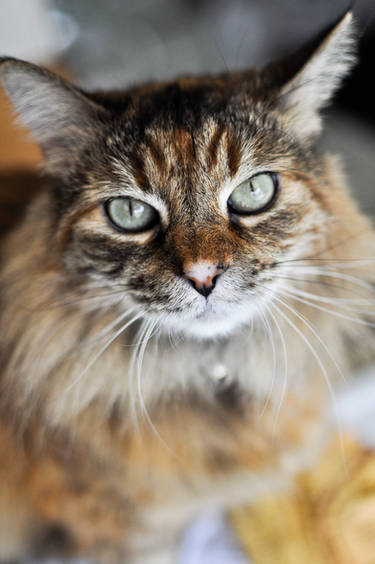Deviation Actions
Description
One of the places we planned to visit while in LA was the LA Zoo. I hadn't been to a zoo in...I really can't remember, honestly, and was excited to walk around and see what sort of animals the LA Zoo had. Before heading there, we stopped over at my friend Jimmy's apartment; Jimmy handed us off a 75-300mm zoom lens, as the most telephoto lens I own is a 100mm prime, and I thought the extra reach would come in handy for shooting animals from a distance - I was right about that.
From the LA Zoo website:
American black bears are the smallest and most prevalent of the bears native to North America. American black bears consume large amounts of food during the summer and fall, but they aren’t “true” hibernators because their body temperatures don’t drop dramatically, and they are still relatively alert. However, black bears still don’t eat, drink, or excrete waste during this time.
STATUS: American black bears are listed as Least Concern by the International Union for Conservation of Nature (IUCN).
HABITAT: American black bears live in various forests throughout North America and are found in 41 of the 50 United States. They mostly occupy temperate forests, but are also found in swampy or mountainous forested areas.
DIET: American black bears are opportunistic omnivores with a flexible diet. They eat grasses, fruits, berries, nuts, insects, human foods, and occasionally small vertebrates. During the summer, and even more so in the fall, these bears eat food high in protein—especially fruits, acorns, and nuts—to build up their body weight prior to hibernation.
PHYSICAL CHARACTERISTICS: Most American black bears are black, naturally; however, they can also be lighter colors like brown, gray, cinnamon, or even cream, depending on the region. Generally, these bears have muzzles lighter than their fur and a light spot on their chest. American black bears can be four to seven feet long, but usually fall within the five to six feet range. Their weight, ranging from 150-600 pounds, is contingent on factors like gender and time of year; males are roughly 25% larger than females, and the bears weigh much more prior to hibernation than afterwards. Because they have relatively short legs and walk on the entire sole of their feet (like humans), American black bears can cover long distances without tiring. They have sharp claws which contribute to swift tree climbing and digging for food. The contrast between their large snouts and small eyes and ears indicates a dominant sense of smell accompanied by weaker senses of vision and hearing.
Protective Mothers
Female American black bears have a strong maternal instinct, and they spend most of their lives preparing to have cubs and raising their cubs. Mating occurs between May and July, and gestation lasts two to three months. Offspring are not born until January-February due to delayed implantation. However, a female will start her den preparations as early as mid-July to promote the success of her young. She must also consume a lot of nutritious food in the months before hibernation to ensure she has enough body fat to maintain her own health and the health of her unborn young. The first few years of sexual maturity, many females cannot maintain their pregnancies, so they attempt to gain even more weight for their next pregnancy. When a female successfully holds a pregnancy, she gives birth to two (sometimes three) altricial cubs. The cubs are completely dependent on their mother for the first year, but usually stay with her a second year for protection. Due to this rearing behavior, females reproduce every other year.



































